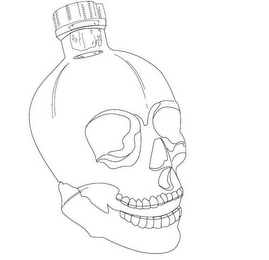We’ve spilled a lot of digital ink here over the past several years discussing the protection of non-traditional trademarks. We’ve also written about the importance of layering various intellectual property rights (trademark, copyright, and patent) to accomplish the competitive goals of a business. And, we’ve enjoyed writing about non-traditional vodka branding here and here. Today, we have it all come together at once.
A federal lawsuit filed in Minnesota a couple of weeks ago illustrates very nicely the creative layering of intellectual property rights that are available to many brand owners, not just distilled spirit and vodka brand owners.
In Globefill Inc. v. Maud Borup, Inc. (complaint is here and exhibits are here), Globefill (who sells vodka in skull-shaped bottles) brought several IP claims against Maud Borup (who apparently sells cocktail mixers and hot sauces in skull-shaped bottles). I suspect the lawsuit resulted from Maud Borup’s recent Halloween features.
Globefill asserted infringement of its federally-registered skull bottle trade dress rights and its common law rights in the skull bottle trade dress, in addition to infringement of its registered copyright in the 3 dimensional sculpture embodied in the vodka bottle packaging, and infringement of the ornamental design features covered by a design patent (all issued rights shown in the exhibits attached to the complaint).


The beauty of the layering of IP rights lies in the fact that each asserted IP right offers a different path to accomplish the same end goals of ending the infringement and unfair competition while also providing a monetary award to the brand owner.
For example, having copyright and patent rights will serve as a strong basis for injunctive relief even if there is no likelihood of confusion (which is required to establish trade dress infringement), so for those IP claims, no need to focus on whether hot sauce and vodka are sufficiently related to establish the requisite confusion for the trade dress claims.
Since the trade dress is federally-registered, the burden shifts to Maud Borup if it wants to defend the trade dress claims on functionality grounds. Without a registration, Globefill would have had the burden of establishing non-functionality of the skull design vodka bottle.
To establish copyright infringement Globefill will need to prove Maud Borup’s access to Globefill’s bottle and substantial similarity of the three dimensional skull works. This uniquely then opens the door to statutory damages and an award of attorneys fees to the prevailing party. On the other hand, with the patent and trademark claims, actual damages must be proven (as opposed to more easily obtained copyright statutory damages), and an award of attorneys fees is only possible for exceptional cases with patent and trademark claims, merely prevailing it not enough (as it is with copyright claims).
And, let’s not forget the boxcar numbers that can result from proving design patent infringement.
Of course, the different proofs and remedies resulting from Globefill’s intelligent layering of IP rights on a single product is far more complex than what I’ve noted here, but I think you get the point — there’s more than one way to obtain injunctive relief and more than one way to obtain monetary relief, based on essentially the same conduct by the defendant.
So, creative layering can be a beautiful sight, but just yesterday, John Welch, over at the TTABlog highlighted a case where the layering of IP rights didn’t go as well for the brand owner.
In that case, the brand owner fell into the all-too-common trap we have warned about for a long time, touting function over form, while trying to obtain non-traditional trademark rights — basically, it was a failed attempt to go beyond the copyright and utility patent rights the brand owner already had secured.
In short, word to the wise, there is far more art than science to an intelligent layering of intellectual property rights.
